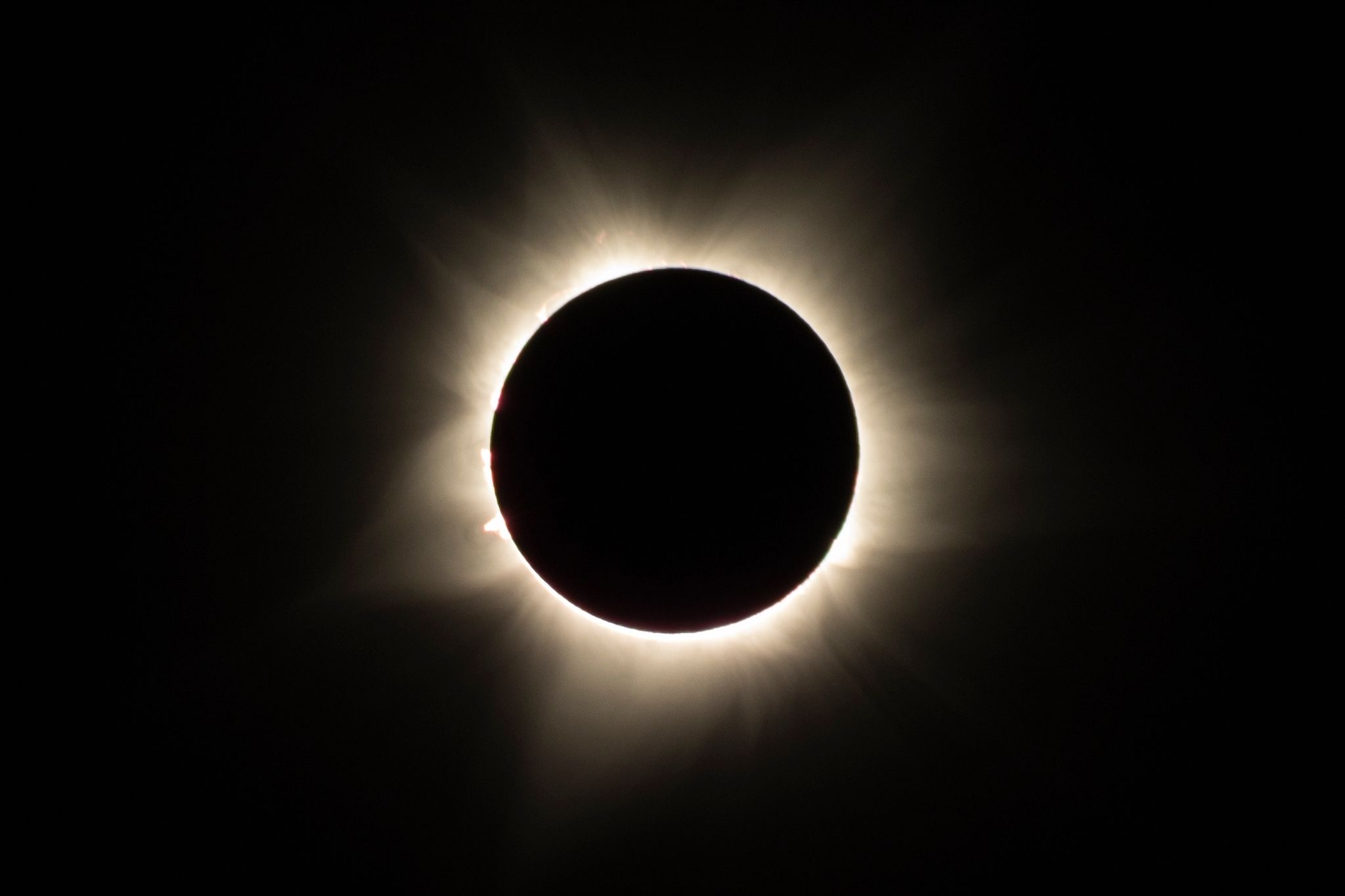
Everything you need to know about New York’s once-in-a-lifetime 2024 solar eclipse

A spectacular solar event will grace the skies above New York this spring. Considering that the next solar eclipse over New York won’t happen for more than 50 years, you really don’t want to miss this one.
To make the most of the experience, we broke down everything you need to know about the eclipse, like when and where it’s happening, how to be safe, and where to find some stellar events. We’ll keep this page updated as the eclipse approaches, so stay tuned for more.
RECOMMENDED: Let me tell you—the solar eclipse will be the coolest event in New York this year
What is a solar eclipse?
During this celestial spectacle, the Moon will pass between the Sun and the Earth, completely blocking the face of the Sun, NASA explains. It’s a rare event that you won’t want to miss.
When the 2024 solar eclipse?
The total solar eclipse is on Monday, April 8, 2024. In terms of exact timing, totality varies from place to place. Taking Buffalo as an example, the partial eclipse will begin around 2:04pm, with totality running from 3:18pm-3:22pm. NASA’s got a chart with exact timings here.
The next time a solar eclipse with grace the skies over the continental U.S. is 2044, but the next time you’ll see a total solar eclipse in New York will be 2079. That’s why you really don’t want to miss it.
Where can I see the 2024 solar eclipse?
If you want to experience the eclipse to its fullest, you’ll have to head outside of the city. Rochester, Buffalo, and Syracuse are prime viewing locations, as they’ll be in the path of totality and they’re planning lots of fun events.
New York City isn’t in the path of totality, but we’ll still see 89% coverage, per the Governor’s office. That means you’ll want to get your eclipse glasses ready and make plans for the day.
What happens during a solar eclipse?
The sky will darken like it’s dawn or dusk and cast lots of freaky shadows. It makes for a trippy few moments until the afternoon light returns once again.
During the eclipse, nocturnal wildlife sometimes wakes up, thinking that it’s nighttime, and non-nocturnal wildlife might think it’s time for sleep.

How can I stay safe during an eclipse?
No matter where you experience the eclipse, the most important thing is to keep your eyes safe. NASA has all the intel on exactly what you’ll need to stay safe.
Per NASA: “You must look through safe solar viewing glasses (‘eclipse glasses’) or a safe handheld solar viewer at all times. Eclipse glasses are NOT regular sunglasses; regular sunglasses, no matter how dark, are not safe for viewing the Sun.”
What events are happening for the eclipse?
In Rochester, the Rochester Museum and Science Center is hosting ROC the Eclipse, a multi-day festival from April 6-8. Events will include hands-on activities, speakers, food, and, of course, lots of fun science. Their goal? “Making sure the eclipse is accessible and exciting to literally everyone under the sun.”
Over in Buffalo, the science center there is hosting a solar eclipse safety training on February 23, then an after-hours eclipse-themed event on March 1. They’ll be closed on the actual day of the eclipse, though.
As for Syracuse, their science museum is hosting a solar eclipse festival on April 8, complete with free eclipse glasses, activities, and food trucks.